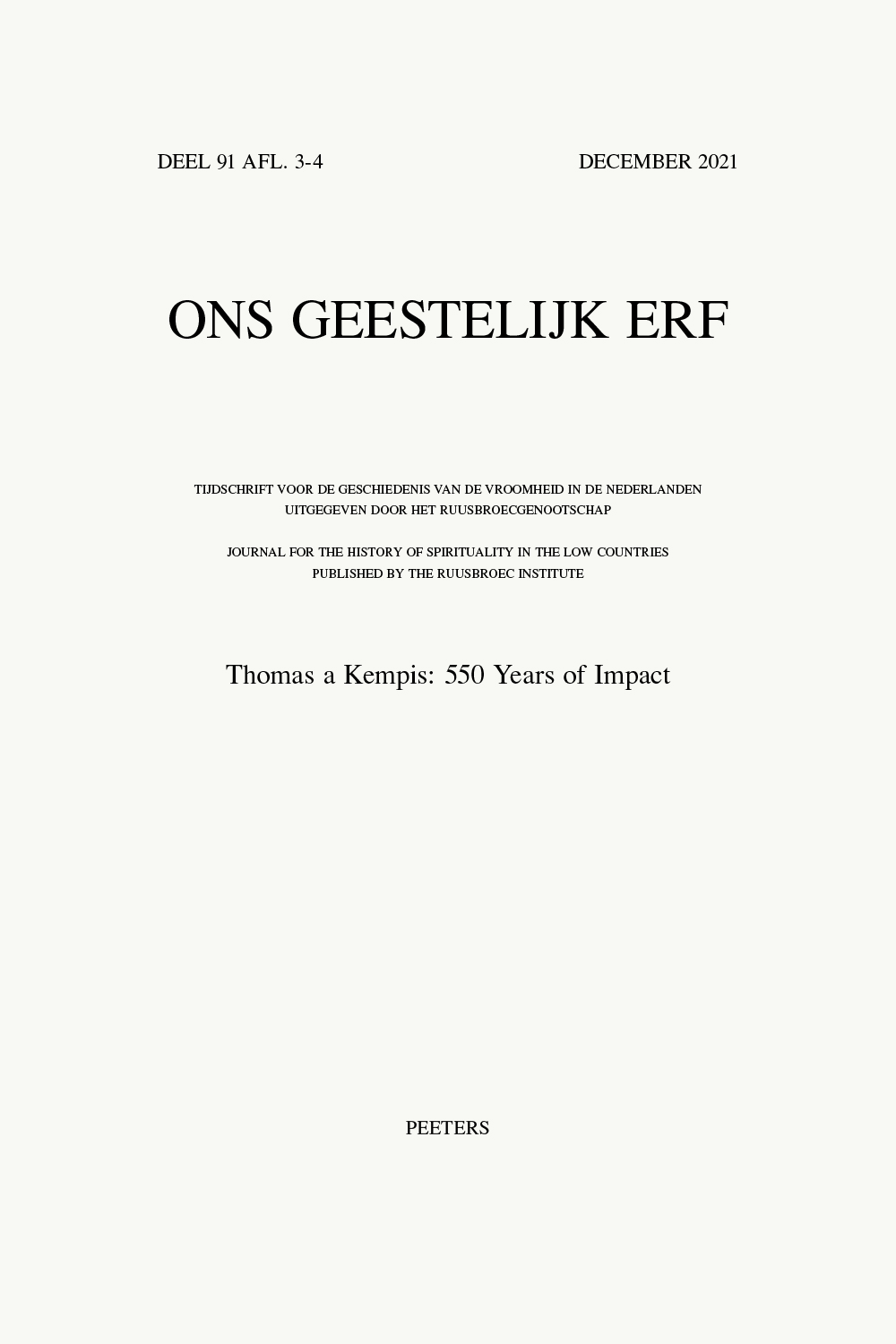 previous article in this issue previous article in this issue | next article in this issue  |

Preview first page |
Document Details : Title: De kronieken van de Delftse tertiarissenconventen Author(s): VERHOEVEN, Gerrit Journal: Ons Geestelijk Erf Volume: 74 Issue: 1-2 Date: maart-juni 2001 Pages: 105-152 DOI: 10.2143/OGE.74.1.616448 Abstract : Contrary to the Congregation of Windesheim the Third Order of St Francis is not rich in historiographical works. No more than five chronicles of convents and a fragment of a sixth one have come down to us. In this article the chronicles of the Delft convents of St Agatha (founded 1380) and St Barbara (founded 1401) are analysed and edited. The chronicle of St Agatha might have been written by Maria Ofhuys, mother of the convent around 1450. She treated the humble origin of the house and the deeds of the successive mothers. The chronicle was meant as a work of history, but also as an edifying exhortation to humility. The stories about the pious deathbeds of some of the mothers will have comforted the sick in the hospital room of the house, where we know the chronicle was kept. The first version of the chronicle of St Barbara was written by Jan Janszoon, confessor of the convent from 1515 to 1544. Central in his story are the origin of the convent as a separation from St Agatha and the deeds of the successive confessors. He may have written this chronicle after the great fire of Delft in 1536, that also destroyed St Barbara and its archives. He probably wanted to save the history of the convent from oblivion and to encourage the sisters by making them fully aware of how their predecessors had overcome disasters. This led him to write open-heartedly about past troubles, e.g. a conflict with St Agatha, even if these stories put his own convent in an unfavourable light. His chronicle was continued and partly rewritten by Christiaan van Adrichem, confessor of the convent from 1565 until his flight to Cologne in 1572. He left out all negative aspects of the history of the convent and the order. In his days the ranks had to be closed against the threat of the protestant revolution. |
|


